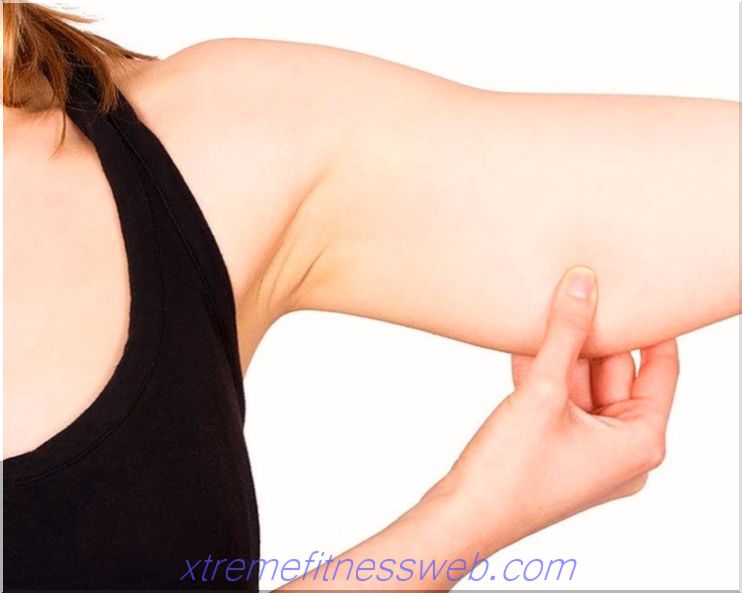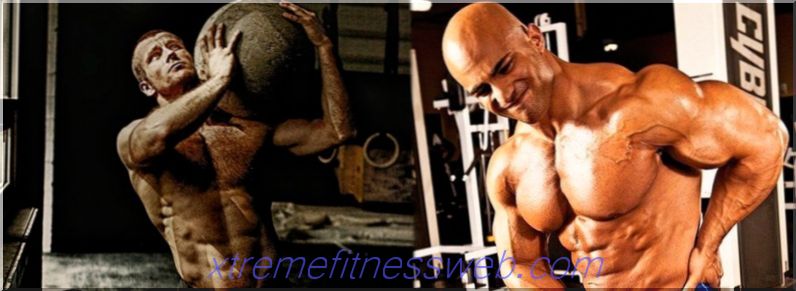
Rising on socks in a simulator sitting - an exercise for calf. The movement is popular among bodybuilders and fitnessists, but it is performed relatively rarely. We have all heard that caviar is genetics, so it’s not worth it to “bother” with their pumping. Accordingly, the technique of lifting on toes is often negligent. The result is low efficiency and injury. By learning to do the exercise correctly, you can not only avoid many problems, but also improve your results in squatting and traction, and visually change your lower legs.
Content
- 1 Technique
- 1.1 Starting position
- 1.2 Movement
- 1.3 Caution
- 1.4 Recommendations
- 2 Analysis of exercises
- 2.1 What muscles work
- 2.2 Preparation for the exercise
- 2.3 Correct execution
- 2.4 Errors
- 3 Improving Efficiency
- 4 Inclusion in the program
- 5 Contraindications
Execution technique

Starting position
- You should sit in the simulator so that you can stably stay on the bench, and not perform movement due to a “push” with your buttocks;
- Both buttocks touch the bench, the back is flat, the natural deflection is preserved;
- The feet are the width of the pelvic ossicles, you do not need to breed them wider;
- The tibia is perpendicular to the floor;
- Socks rest on the simulator platform, heels down
Traffic
- Safety stops are removed by hand;
- With an exhalation, standing on socks is imitated;
- At the top point, you need to statically strain the working muscles;
- With an exhale, descend to the starting position;
- Heels should hang to a comfortable depth, the movement is due to muscle tension
Attention
- You should not change the angles in the knee joints during exercise;
- The hips are on the same level, it is not allowed to put one foot forward;
- The heels can look slightly inward, or you need to perform an exercise with parallel feet;
- Knees should not bend inward;
- In the extension phase of the gastrocnemius and soleus, a pause is not needed;
- The work is done smoothly and constantly, without jerks, jumps and aggressive access to the socks
Recommendations

- You can force lowering by counting a few counts and lowering the heels down;
- Movement in an explosive manner is not practiced, it can overload the Achilles tendon;
- You should not “stick” your thumbs into the floor surface and thus go out on your toes, you need to work slowly and smoothly;
- The movement should not be performed at different amplitudes, all repetitions should be done in the same technique;
- It should go down to 3-4 accounts, and rise - in one smooth motion
Parsing exercise
What muscles work

Anatomically, in this movement, it is not the calf, but the soleus muscle, that is why it turns out that it is more intended for aesthetics.
The quadriceps, thigh biceps work as auxiliary muscles, and partly the press and back during stabilization of the body, but the nature of the exercise provides the maximum isolation of non-target muscle groups.
The main working muscles (in decreasing order of load):
- Flatfish;
- Calf;
- Tibial
Exercise Preparation

Usually a movement completes a leg or full body workout. In the calf pumping exercises, it is important to give all your strength, so work to failure in ultra-multi-repetitive mode is welcome.
This exercise is done after the usual training of the legs, and joint warm-up, you need to make several rotational movements in the ankle joint, and then perform one approach with light weights, in full amplitude, slow pace and not to failure.
Correct execution
- Knees on the same plane as the feet and heels; do not “knock” the knees to the sides while moving;
- One should not aggressively “dip” the heels down; the exercise is performed smoothly and at a fairly slow pace, without jerks and jumps;
- No need to move the socks during the exercise and make rotational movements with them;
- At the top point of the movement you need to “squeeze” the muscle, but do not try to get on the socks as high as possible;
- The feet should be neutral, exit to the edge of the foot is not allowed
Mistakes
- The main mistake is the movement either in too deep or in reduced amplitude;
- Exercise does not need to be performed aggressively, jerkily, and at the same time shift the position of the feet;
- You can’t round your back, tilt forward during exercise, and work by tilting the body back and forth
Increase efficiency

- Shins are a problem area for most athletes, their volume is largely determined genetically, most people actively pump them, but do not achieve results, since they do not alternate between different modes of work and exercises;
- There can be 2 exercises on the shins in the plan if a person experiences problems with this part of the body;
- You should pump legs while sitting and standing on the same training day;
- You can train your shins in a multi-repetitive mode to failure, performing exercises in the simulators, this is a more convenient option than doing exercises to failure with barbells and dumbbells;
- Movement on the calves completes the training, so there was already enough exercise in front of them to warm up, therefore, a long pyramid of approaches can be avoided;
- The feet can be held in parallel, or socks apart, this allows you to pump different muscle bundles, but does not "steal" the load from the target muscle groups;
- The back position should be actively maintained, otherwise the load will shift from calves to hips;
- If the exercise is not convenient, the pressure is too high, perhaps the athlete forgot to adjust the height of the cushion-retainer. In practice, people with large hips that are not comfortable with the exercise are rare
Program Inclusion

- Logically, this exercise will complete the leg workout. It is not advisable to include the exercise in training as the first one, as this will allow the muscles to tire earlier, and the athlete may lose control over the bar during the squat or other basic exercise;
- You can swing your calves several times a week, especially if the athlete divides his legs into a day of the “front and back of the thigh”, you should perform exercises on the calves constantly;
- If failure cannot be achieved by standard methods, various options for increasing the intensity and volume can be applied. You can use drop sets, moving from higher to lower weights, which is convenient if the simulator is block. “Rest-pauses” are allowed, when after tiredness the athlete rests for 2-3 minutes, and then begins to actively repeat the exercise with the same weight;
- It is allowed to use "springs" or partial amplitude, if this allows you to work out the muscles more efficiently;
- The task is quite simple - to include the exercise at the end of the workout so as to cause significant muscle fatigue.
Contraindications
- A clear contraindication is any injury to the Achilles tendon;
- In case of knee injuries, it is necessary to exclude torsional force and not to move the knees in and out;
- Dislocations and sprains in the ankle joint, as well as injuries of the foot and fingers are unequivocal contraindications for the use of this exercise in the training process
Pumping calves is a difficult task. Some athletes are suitable for extremely difficult basic exercises with a barbell, while others like to “polish” the muscles in the simulators, and work out in isolation. For such, the option of a “sitting” calf pumping has been created. In addition, it allows you to get a load when the main muscles are already tired, and it is not possible to additionally load the quadriceps and biceps of the hips even in static.







